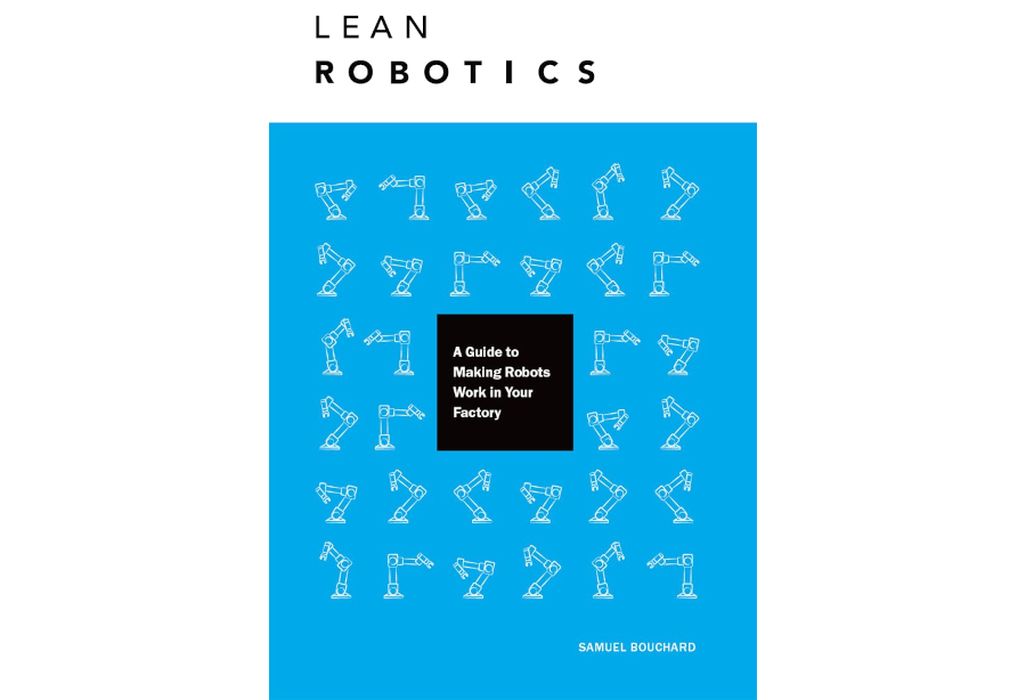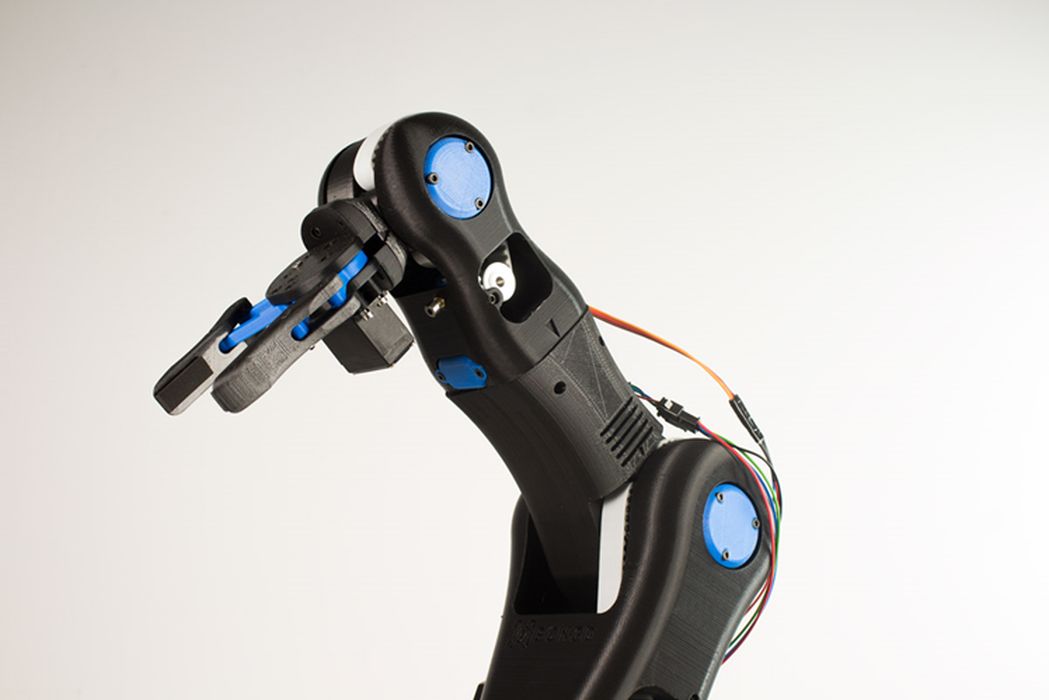
Charles R. Goulding reviews a new book on lean robotics, where 3D printing can take a lead role.
I had the opportunity to read “Lean Robotics” by Samuel Bouchard. Bouchard is the CEO and co-founder of Robotiq in Quebec, Canada.
Robotic provides automation products and services including robot grippers, vision systems and sensors. Dover Corporation has just announced the sale of Destaco including the robot grippers segment we wrote about in our Fabbaloo article to Stabilus SE for US$680 million. Bouchard holds a PhD in Mechanical Engineering. The book is self-described as a guide to making robots work in your factory.
In my view, the book’s important message is that a thorough and cost-effective evaluation of an initial robot capital expenditure project will justify the first and then successive robot purchases.
Bouchard’s deep background and work experience enable him to cover the entire robot project process in today’s business parlance. At the post, the appropriate manual production cell needs to be process-mapped. Then the proposed robot cell needs to be process mapped. Then the two processes need to be compared. Bouchard describes the typical role of each company team member in the process. Ongoing communication of the project goals and progress is critical for managing naysayers and the misinformed.
I thought the book was particularly strong on lean robotic integration into the manufacturing process. Those familiar with enterprise resource planning (ERP) software projects know that they often fail in the integration process because the organization isn’t fully prepared to commit and execute the project.

3D Printing and Lean Robotics
For 3D printing to reach its real potential it must be part of the digitization and automation process from design to production. Robots are a key element in the automation process. Robot integration remains at embryonic levels in today’s manufacturing environment. With Lean Robotics, Bouchard provides the mechanism for much wider robot acceptance and integration.
The Research & Development Tax Credit
The now permanent Research and Development (R&D) Tax Credit is available for companies developing new or improved products, processes and/or software.
3D printing can help boost a company’s R&D Tax Credits. Wages for technical employees creating, testing and revising 3D printed prototypes can be included as a percentage of eligible time spent for the R&D Tax Credit. Similarly, when used as a method of improving a process, time spent integrating 3D printing hardware and software counts as an eligible activity. Lastly, when used for modeling and preproduction, the costs of filaments consumed during the development process may also be recovered.
Whether it is used for creating and testing prototypes or for final production, 3D printing is a great indicator that R&D Credit eligible activities are taking place. Companies implementing this technology at any point should consider taking advantage of R&D Tax Credits.
Conclusion
Bouchard’s book is a must-read for any company considering its first robot project. With his technical background and extensive experience, this book practically gives step-by-step guidance on how to execute a successful robot automation project.
